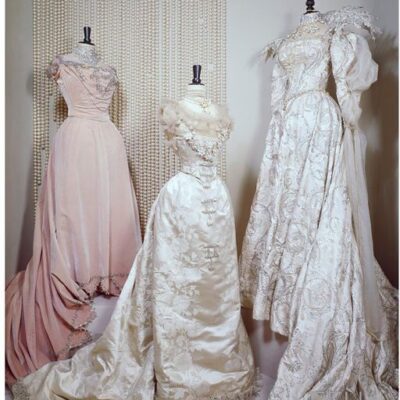
Fashion & History 19.12.2022
03.07.2018
costume historyfashion historyFrench fashion
The French Robe de Cour
Sumptuous, fascinating, wide: these dresses, examples of which can be found in the collections of many museums across the world, have a specific name, and of course, a precise history. They were called robes de cour – or robes de corpse, grand habits, grand habits de cour – and were the formal court wear across Europe during the 18th century.
The person who contributed to its design was no less than Louis XIV, the Sun King, around 1680s. It consists of a stiff, boned bodice laced up the back, a skirt, and separate sleeves. It also accounted for a train to be worn either at the waist or falling from the shoulders.
Louis XIV admired the female body, and could not stand the loose robes that were in fashion at the end of the 17th century. In order to control the look of the people around him – he was the sun king, after all – he ordered to design a dress that featured a fitted bodice and made it mandatory for women to wear in court at all formal events. It is said that in 1704, he reprised some women who dared disobey this unwritten law and wear a more informal dress at the theatre.
In terms of style, the bodice remained quite the same, while the skirt changed in dimension and form. The skirt shape also changed from region to region in Europe: in the 1740s-60s, English robes de cour were quite rectangular and flat, while the French hoop that gave the form to the skirt was less square at the corners.
During the 1770s, it was another king who decided the end the craze for the robes de coeur: Louis XVI, influenced by hist wife Marie Antoinette, who considered it “obsolete and unbearable”, allowed women to come to court with different attires, and especially the so-called robe a la francaise – a looser and wider kind of gown – for the most formal occasions.